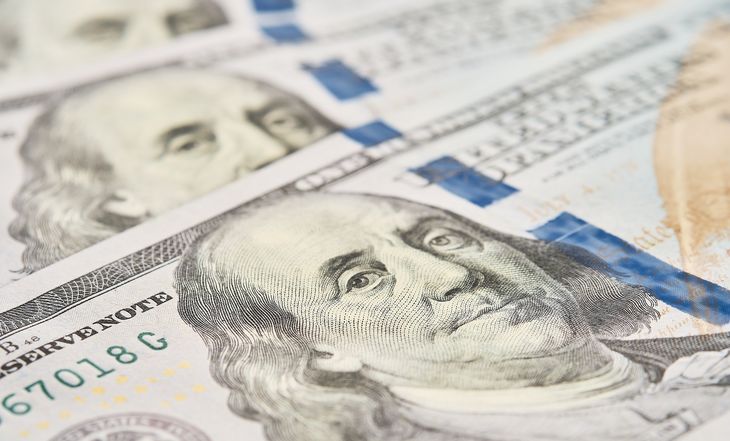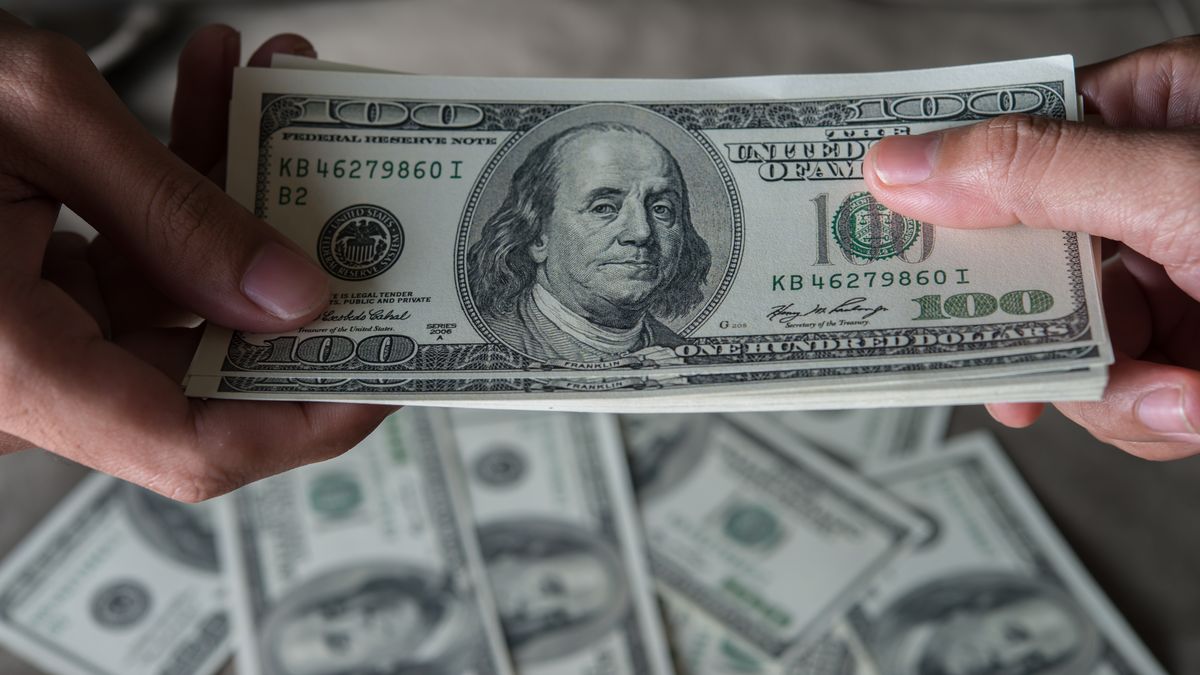The Government sent the 2023 Budget on Thursday night, which forecasts 60% inflation for 2023 and an official exchange rate of $269.90. In addition the Central Bank raised the interest rate to 75% after increasing it 5.5 percentage points.
In addition, it reinforced the exchange trap: They will not be able to buy savings, MEP and CCL who maintain rate subsidies.
Restrictions on the tourist dollar
The new measures under analysis now point to the tourist dollar, given that the government is concerned about a greater outflow of foreign currency due to the expenses of the Argentines who will travel to Qatar for the World Cup.
The The Government is studying the application of modifications to the dollar card because, the Minister of Economy, Serge Massa “In recent days, it received a number of proposals from different sectors, from industries, from companies, which is a proposal that the Government shares, which is that the dollars have to be destined for greater production, for job creation, to attend to the health situations that need to be addressed”.
tropical-beach Tourist Dollar 01.jpg
In the market it is rumored that it would be under analysis to raise the perception of the income tax from 45 to 52%. That possibility would be more speculation than reality. Minister Sergio Massa is not inclined towards options that imply a tax increase.
Another idea that transpired is that all operations related to tourism be processed through the MEP dollar, which would mean an open exchange split. MEP operations are carried out through the purchase of a sovereign bond in pesos and its resale in exchange for dollars.
soybean dollar
Despite the fact that since the implementation of the soybean dollar the BCRA managed to buy some 2,000 million, this is a drop of water in a desert and, for this reason, imposing restrictions on access to foreign currency is being analyzed.
Until this Friday, the soybean farmers marketed on the eve almost 750,000 tons Y They thus accumulated more than 8 million in nine dayssince the Export Increase Program came into force on Monday of last week, which implements a type of exchange rate of $200 per dollar for oilseed exports until next September 30.
It is also being considered to extend this scheme to other sectors that generate income of dollars to the country, such as mining or the software industry. The premise of the Massa Plan is to strengthen the reserves of the Central Bank and then recover the purchasing power of wages.
New measures for the dollar
In addition to those already mentioned and those under analysis, the Government reported more measures linked to the dollar. One of them is that the Budget includes a laundering through which undeclared dollars can be entered to buy used real estate and pay for imports.
In article 71, the Budget establishes that the funds that are declared (which must pay between 5 and 20% according to the original rule) “may also be used for the acquisition of a used property.” Let’s remember that until now you could only buy new units or units under construction.
The purchase of used properties, however, will have limitations: it must be destined for the home of the person who launders money and his family or, “for a period of not less than 10 years”, for rent with the exclusive destination of a house-room (that is, not commercial).
The whitening period would be 6 months and there are no money laundering restrictions for those who already have properties in their name. Thus, a taxpayer could have other real estate and buy a used property to use as a home and thus qualify for money laundering.
In this Friday’s edition of “What is said at the tables”, the traditional Financial Area section, it is indicated: There is much speculation about whether all this minuet of isolated measures does not pave the way for a plan in the style of the Austral, saving the differences and the teams involved. In reference to the swipe of former President Raúl Alfonsín that shortly after allowed him to win the elections. This hypothesis is based on the simple fact that if inflation continues to be dislocated, it will be difficult to reach 2023, not just the elections. Meanwhile, more noise of splitting, much touted by Vice Rubinstein.
dollars for imports
On the other hand, in article 72, it is enabled to use undeclared dollars to bring merchandise from abroad into the country. This is an initiative that Cgera presented this week to the Secretary of Foreign Trade, Matías Tombolini.
To do this, create the “Argentine Investment and Production Incentive Regime” through which residents in Argentina will be able to launder dollars in the country and abroad for one year but only to pay for imports for consumption, including services, intended for production processes. The funds must be deposited in a Special Deposit and Cancellation Account for Argentine Investment and Production “in the manner and within the terms established by the AFIP and the Central Bank,” says the initiative.
The tax that must be paid in this case is similar to that established for Construction: from the date the Regime enters into force and until 90 calendar days have elapsed: 5%; from the 90th to the 180th day: 10%; from day 180 to year: 20%. The dollars will be valued at the purchasing exchange rate of Banco Nación.
super dollar and reserves
On the external front, the dollar in the world is at its highest levels in 20 years. And for international analysts, the bullish rally is not over yet. For Argentina it has a triple impact: it hits against emerging countries, raw materials, and investor appetite.
The reserves of the Central Bank added in the last two weeks, until Friday, some 2,170 million dollars due to the massive liquidation of soybean exporters, who are taking advantage of a special exchange rate during September. With the idea of recovering foreign currency, the Government recognizes 200 pesos for each dollar to those who sell their soybean positions, one of the main national products with wide external distribution.
But on the other hand, the devaluation of the Chinese yuan dealt a blow to the reserves of the Central Bank.
Dollar MEP and CCL
With an exchange rate gap of over 100%, the financial dollar scored this this Friday, September 16 its third rise in a row and posted its biggest weekly gain since July, driven by the negative inflation data for August, due to the demand generated by the soybean dollar scheme, and due to an increase in global risk aversionoperators commented.
On the Stock Exchange, the Cash Settlement dollar (CCL) -operated with the Global 2030- advanced this Friday $5.78 (+2%) to $301.15 -its highest value in the month-. Thus, the gap with the official wholesale exchange rate reached 109.8%.
In turn, the MEP dollar -valued with the Global 2030- increased $4.53 (+1.6%) to $294.19, its highest value since July. Consequently, the spread with the official reaches 105%.
Both prices registered weekly increases of $20.27 (+7.2%) and $24.63 (+9.1%), respectively, which represents the most significant increase in this period since the end of July.
Among the causes that led to the sharp jump in financial exchange rates are a worsening of conditions in the external context, pressured by expectations of a more aggressive rise in US interest rates than has been seen so far, at the same time as light of the latest data from the world’s largest economy.
dollar-savings-investments-finance

freepik.es
“Although the worse-than-expected CPI data for Argentina could have revived foreign exchange demand, I understand that mainly the acceleration of the MEP and the liquidity account responds to global phenomena,” Juan Pablo Albornoz, an economic analyst at Inveqc, commented to Ámbito.
Inflation in the US showed higher data in August than was projected (8.3% vs. 8.1% year-on-year). In turn, core inflation, which excludes fresh food and energy, rose 0.6% monthly and 6.3% in annual terms, which implies an acceleration compared to the figure for July. “This accentuates the perception that the inflationary process is more difficult to tame than was believed,” Albornoz said.
Another factor that partly explains the strong rebound of the CCL and MEP is the increase in potential demand generated by the measure of the soybean dollar, according to the market.
“The strong increase in demand for the CCL and MEP could have its correlation with the settlements made by agriculture through the soybean dollar, but also because the market sees that, in the near future, a large amount of pesos in the market derived from the issuance by this measure can complicate the panorama of the fiscal deficit”, the economist Federico Glustein remarked to this medium.
“With the new rise in the rate and the acceleration of the ‘crawling-peg’ already on the table, the attention of operators continues to be focused on the ‘soybean dollar’ since it is crucial for the supply of foreign currency and thus the recovery of reserves , even though the associated monetary issue must be sterilized in order to avoid putting pressure on inflation,” explained economist Gustavo Ber.
Source: Ambito
David William is a talented author who has made a name for himself in the world of writing. He is a professional author who writes on a wide range of topics, from general interest to opinion news. David is currently working as a writer at 24 hours worlds where he brings his unique perspective and in-depth research to his articles, making them both informative and engaging.




